by Lorri | Feb 29, 2012 | UnCorked
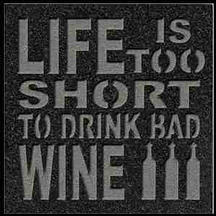 Judging the quality of a wine is essential to its enjoyment, and understanding quality starts with a simple question: Does the wine smell clean? Whether you are a beginner or expert, your nose will quickly guide you.
Judging the quality of a wine is essential to its enjoyment, and understanding quality starts with a simple question: Does the wine smell clean? Whether you are a beginner or expert, your nose will quickly guide you.
Twenty years ago, poor quality, unclean wines were more commonplace, but with today’s technology only a minuscule amount of bottles are faulty because of an error in the wine-making process. A modern wine that is in good condition will not have even a slight smell of musty basements, mold, rotten eggs or vinegar.
If you do detect one of these aromas, the culprit, most likely, is the cork or improper storage conditions along the journey from the winery to your glass. Following are some common problems and ways to identify them.
CORK TAINT/CORKED WINES
Corked wine, or cork taint, as the flaw is also called, is one of the most obvious defects. The wine will exhibit musty aromas like a moldy, damp basement or wet cardboard and newspapers. Cork taint is the most common wine fault and is thought to affect up to 10 percent of all wines bottled in the world.
Taint is caused by cork infected with a fungus producing 2,4,6-trichloroanisole (TCA). When this chemical comes in contact with the wine, it imparts musty and moldy aromas. Research suggests there may be a connection between the process of chlorine bleaching the corks and the development of the fungus.
In the late 1990s cork taint forced many wine producers to seek alternate closures, including screw caps and synthetic corks. Because the TCA fungus is not able to harbor in screw tops, crown caps or other noncork closures, they are safe alternatives for avoiding faulty wines caused by an unlucky draw of a tainted cork.
OXIDATION
Oxidation is the result of a wine being exposed to air and is usually caused by a faulty cork.
Oxidized wines are simple to detect, with dull or stale fruit aromas and flavors. These wines will have a brownish color because of the contact with oxygen, much as a cut apple will brown when exposed to air. Keep in mind a few wines are intentionally oxidized during the making, such as sherry and port. But for the others, oxygen is not a wine’s friend, either in the bottle or during wine making.
VOLATILE ACIDITY
Though rare in commercial wineries, volatile acidity occurs from poor hygiene or prolonged undesirable temperatures during winemaking. It is more common for home winemakers. Volatile acidity is most often caused by bacteria in the wine, creating acetic acid. It is most easily recognized by the aromas of vinegar or nail polish remover.
BAKED WINES
Baked or cooked wines are largely due to exposure to high temperatures during storage or transportation. Not only does the extreme heat change the taste of a wine, but it can also cause oxidation. When a wine is exposed to high temperatures, the liquid expands, forcing the cork from the neck of the bottle. After the wine cools, the cork will contract, leaving the opportunity for air to trickle in around the displaced cork.
Detecting a cooked wine is straightforward because it simply tastes and smells as if the wine was cooked. The wines usually lose freshness, smelling more like stewed fruits or prunes.
by Lorri | Feb 22, 2012 | UnCorked
 A few years ago, I realized that entertaining friends in our home did not have to be a stressful ordeal of extensive menu planning and seating charts.
A few years ago, I realized that entertaining friends in our home did not have to be a stressful ordeal of extensive menu planning and seating charts.
I found our best get-togethers were around the coffee table in the living room, talking for hours and drinking wine from mismatched glasses.
For something to enjoy with the wine, look no further than the time-honored traditional cheese platter. It’s easy, elegant and effortless because the secret is all in keeping it simple. If you want to add a few treats beyond bread and crackers, consider olives, prosciutto di Parma, Serrano ham, tapenades, apricots, pear, apples or figs.
Blue Stilton and Tawny Port
THE VALUE
- Sandeman 10 Year Tawny Port, Portugal (about $38 retail)
THE SPLURGE
- Niepoort 10 Year Tawny Port, Portugal (about $50 retail)
Brie and Champagne
THE VALUE
- NV Nicolas Feuillatte Brut Champagne, France (about $45 retail)
THE SPLURGE
- NV Taittinger Brut La Francaise Champagne, France (about $74 retail) Goat Cheese and Sauvignon Blanc
THE VALUE
- 2010 Monkey Bay Sauvignon Blanc, New Zealand (about $13 retail)
THE SPLURGE
- 2010 Kim Crawford Marlborough Sauvignon Blanc, New Zealand (about $19 retail)
Aged Cheddar and Syrah
THE VALUE
- 2009 Frei Brothers Syrah, California (about $19 retail)
THE SPLURGE
- 2009 Renwood Amador Syrah, California (about $27 retail)
by Lorri | Feb 15, 2012 | UnCorked
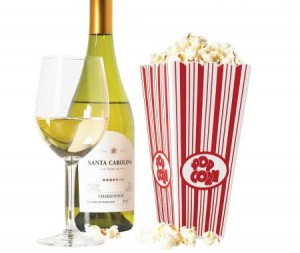
I never thought I would write a column on corn and wine pairings, let alone my baffling and surprising moment of matching wine with popcorn.
My interest was sparked while reading Andrea Immer’s book, Great Tastes Made Simple. Immer declares corn is one of the most fundamental wine foods and she has yet to find a wine that it doesn’t flatter.
Corn is one of America’s largest crops, grown from sea to shining sea and found in many varieties of food, from popped to polenta. And corn, according to Immer, has an ideal partner in one of America’s favorite wines, chardonnay.
After she discovered the affinity of chardonnay and corn she dug deeper into the many regional cuisines celebrating corn — from country grits in Charleston, S.C., and Cuban arepas to New Mexican blue cornmeal breading for fried calamari and even toasted-hominy croutons.
But the most surprising pairing is popcorn. Try Immer’s popcorn test for an eye-opening tutorial. You can use already popped corn or make it yourself. For my experiment, Iused a microwave buttered popcorn and a creamy, buttery full-bodied chardonnay, which, with the popcorn, made an even more flavorful, buttery blend. The saltiness of the popcorn brought a refreshing flavor to the wine. It wasn’t the magical pairing reminiscent of say, port and Stilton or goat cheese and sauvignon blanc, but I agree popcorn and chardonnay are a good (and nonplussing) match.
Light-bodied corn dishes such as fritters, hush puppies, corn salsa, buttered corn on the cob and cornbread should work well, too.
The value chardonnay is the wine Immer paired with popcorn during her taste tutorial.
THE VALUE
- 2011 Lindeman’s Bin 65 Chardonnay, Australia (about $8 retail)
THE SPLURGE
- 2010 Estancia Monterey County Chardonnay, California (about $15 retail)
For fuller-bodied corn dishes such as corn pudding, polenta, cheese grits, creamed corn, corn casserole, corn chowder or creamed hominy, try these.
THE VALUE
- 2010 Toasted Head Chardonnay, California (about $15 retail)
THE SPLURGE
- 2010 La Crema Sonoma Coast Chardonnay, California (about $25 retail)
by Lorri | Feb 8, 2012 | UnCorked
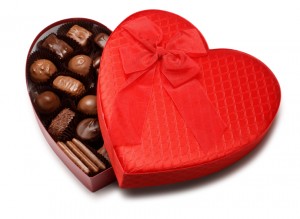 Each year on Valentine’s Day my husband never fails to amaze with me with yet another unique and romantic gift. Compounding the impressiveness of this feat is that my wish list usually doesn’t include roses, candies or even jewelry, it revolves around another love of my life: wine.
Each year on Valentine’s Day my husband never fails to amaze with me with yet another unique and romantic gift. Compounding the impressiveness of this feat is that my wish list usually doesn’t include roses, candies or even jewelry, it revolves around another love of my life: wine.
My Valentine’s Day surprises have included such extravagant gifts as my favorite bottle of wine over dinner and a starry-eyed, wine country getaway to practical but still sassy and colorful wine totes. Each gift is beloved because of the thought put into selecting it. So, if you have a wine enthusiast in your life and are looking for a few gift ideas, consider these suggestions for your valentine.
- Chocolate and wine pairing gift set. One of my favorites is the Wine Lovers Chocolate Tin produced by the San Francisco Chocolate Factory. The collection is a wonderful way for wine lovers to experience the subtleties of wine and chocolate without the work (or risk) of creating pairings from scratch. The tins contain dark chocolates with varying cocoa intensity and are labeled with the grape variety that best complements the chocolate. The chocolates’ cocoa content ranges from 54 percent to 72 percent, and they pair with well-known varietals such as cabernet sauvignon, pinot noir, merlot, syrah and port.
- Chocolate of the Month Club. What’s more romantic than a wine-and-chocolate gift set? Chocolates arrive at your doorstep month after month. The best clubs will provide world-class selections focusing on quality and unique chocolates. Some clubs even boast that their chocolates contain secret bean blends, guarded roasting techniques and even infusions of rare spices and flowers. Most companies allow you as little as a three-month commitment for your gift.
- Chateau Calon Segur, Bordeaux, France. We all have wines reminiscent of a special occasion. For me, next to a bottle of Duckhorn (the wine we enjoyed on our wedding night), the romance of Calon Segur is hard to top. The label of this prestigious property of Saint–Estephe has a heart on it, making it a perfect choice for your valentine. It’s said owner Marquis Nicolas-Alexandre de Segur claimed, “I make wine in Latour and Lafite but my heart is in Calon” as the reason behind the heart on the label.
- Wine Country Getaway. What’s more romantic than a trip to a wine region with the one you love? There are many options and choices ranging from a day trip to Altus, a long weekend in California or a destination vacation to France or Italy. Of course your valentine will love this gift, but you get to enjoy it too.
by Lorri | Feb 1, 2012 | UnCorked
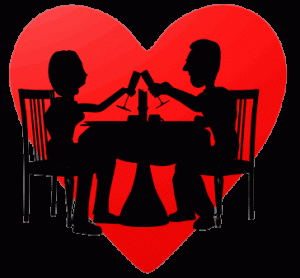 You have your Valentine dinner plans in place but wonder what wine to pair with chocolate-dipped strawberries or oysters. Whether you are planning dinner out at a restaurant or a romantic feast at home, consider these favorites.
You have your Valentine dinner plans in place but wonder what wine to pair with chocolate-dipped strawberries or oysters. Whether you are planning dinner out at a restaurant or a romantic feast at home, consider these favorites.
Oysters: Pairing a bare, raw oyster with champagne is ideal but that wine may not hold up to the powerful, rich flavors of Oysters Rockefeller. Choose champagne for serving simple and fresh oysters, but for oysters adorned by sauces and toppings consider a more full-bodied white such as chardonnay.
THE VALUE
- 2010 B.R. Cohn Silver Label Chardonnay, California (about $17 retail)
THE SPLURGE
- NV Nicolas Feuillatte Brut Champagne, France (about $45 retail)
Steak: To choose a wine complementing beef consider the cooking method and cut of the steak. The tannins in red wines react to the fat in some cuts of beef. If you prefer leaner cuts such as sirloin or filet mignon then consider a less tannic wine such as merlot or pinot noir. For beef cuts with fatter content like a New York strip, rib eye or skirt steak, they will stand out with a more hearty tannic full-bodied wine like cabernet sauvignon or Italian Chianti.
THE VALUE
- 2010 Root: 1 Pinot Noir, Chile (about $12 retail)
THE SPLURGE
- 2009 Bell Wine Cellars Yountville Merlot, California (about $36 retail)
Chocolate: The simple rule is the wine should be at least as sweet, if not sweeter, than the chocolate. If the two are not compatible there could be a slight sour taste. The best pair-ups are light-bodied reds with mild-flavored chocolates and full-bodied reds with darker, more robust chocolates. Delicate Moscato dAsti is an ideal pairing with the mellow butter flavors of white chocolate.
THE VALUE
- 2010 Cupcake Central Valley Cabernet Sauvignon, California (about $9 retail)
THE SPLURGE
- NV Risata Moscato dAsti DOCG, Italy (about $17 retail)
Chocolate-dipped strawberries: Champagne, sparkling wines or fruity bubbly match beautifully with the chocolate and strawberry flavors. Brachetto dAcqui, (bra- KAY- toh) a lightly effervescent fruity low-alcohol red, already has a fresh taste of strawberry and raspberries, making it a favorite match for chocolate-dipped strawberries.
THE VALUE
- NV Rosa Regale Brachetto dAcqui, Italy (about $18 retail)
THE SPLURGE
- NV Conte Stella Rosa Brachetto dAcqui, Italy (about $24 retail)
by Lorri | Jan 25, 2012 | UnCorked
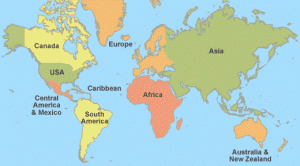 More and more higher quality wines are being made around the world, which creates tremendous opportunities for wine drinkers along with heaps of bargains. And the timing couldn’t be better, with a slow economy putting a pinch on many a wine budget.
More and more higher quality wines are being made around the world, which creates tremendous opportunities for wine drinkers along with heaps of bargains. And the timing couldn’t be better, with a slow economy putting a pinch on many a wine budget.
When searching for great finds, I look for budget-friendly wines that don’t sacrifice quality. Many of the top values I found were not the expected cheap and cheerful $10 bottles of the past, but quality wines earning high scores (some 90-plus) from top critics.
From Washington state to Argentina, these wines will have you drinking well for less.
THE VALUES
- 2009 Fetzer Zinfandel, California (about $9 retail)
- 2010 McWilliam’s Hanwood Estate Riesling, Australia (about $10 retail)
- 2009 Trapiche Malbec, Argentina (about $9 retail)
- 2009 Concannon Syrah, California (about $10 retail)
- 2009 Yalumba Oxford Landing Shiraz, Australia (about $10 retail)
- 2010 La Vieille Ferme Cotes du Luberon, France (about $10 retail)
THE SPLURGES
- 2009 J. Lohr Los Osos Merlot, California (about $15 retail)
- 2010 Zonin Pinot Grigio, Italy (about $12 retail)
- 2011 Columbia Crest Riesling, Washington (about $11 retail)
- 2010 Broadbent Vinho Verde, Portugal (about $12 retail)
- 2010 Cline California Viognier, California (about $12 retail)
- 2010 Pacific Rim Chenin Blanc, Washington (about $13 retail)
- 2010 La Playa Block Selection Chardonnay, Chile (about $14 retail)
- 2010 Mig uel Torres Viognier, Chile (about $12 retail)
- 2009 Bodega Norton Torrontes, Argentina (about $11 retail)
- 2009 Shoofly Shiraz, Australia (about $12 retail)
- 2009 Renwood Lodi Viognier, California (about $12 retail)
 Judging the quality of a wine is essential to its enjoyment, and understanding quality starts with a simple question: Does the wine smell clean? Whether you are a beginner or expert, your nose will quickly guide you.
Judging the quality of a wine is essential to its enjoyment, and understanding quality starts with a simple question: Does the wine smell clean? Whether you are a beginner or expert, your nose will quickly guide you. A few years ago, I realized that entertaining friends in our home did not have to be a stressful ordeal of extensive menu planning and seating charts.
A few years ago, I realized that entertaining friends in our home did not have to be a stressful ordeal of extensive menu planning and seating charts.

 You have your Valentine dinner plans in place but wonder what wine to pair with chocolate-dipped strawberries or oysters. Whether you are planning dinner out at a restaurant or a romantic feast at home, consider these favorites.
You have your Valentine dinner plans in place but wonder what wine to pair with chocolate-dipped strawberries or oysters. Whether you are planning dinner out at a restaurant or a romantic feast at home, consider these favorites. More and more higher quality wines are being made around the world, which creates tremendous opportunities for wine drinkers along with heaps of bargains. And the timing couldn’t be better, with a slow economy putting a pinch on many a wine budget.
More and more higher quality wines are being made around the world, which creates tremendous opportunities for wine drinkers along with heaps of bargains. And the timing couldn’t be better, with a slow economy putting a pinch on many a wine budget.